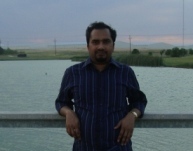According to the 2001 Census, India's Muslim population was over 138 million , next only to that of Pakistan and Indonesia. As the final figures from the 2011 Census haven't been disclosed yet, the current Muslim population, with 30 percent decadal growth rate, is estimated at 180 million, or roughly 15 percent of India's population of 1.2 billion. But the story of 180 million Indian Muslims, however, is more bitter and less sweet.
On a positive note, the Indian Muslims can boast of three of the nation's former presidents and three vice presidents, including the incumbent, from the community. The list of Muslim high achievers in the field of music, literature and art, including the cinema, is not unimpressive either. Another field of considerable Muslim prominence is sports. Some of the nation's best players have been engendered from the religious minority community. Looking at these "stars," one would say, "WOW! How prominent Muslims in India are!"
Besides the ceremonial or celebrity status, Muslims occupy a prominent space in the electoral landscape; not as influential leaders, but as a vote bank, in reserve, for the secularist political parties. However, the "feel good" situation from these occasional prominences does not last long because the majority of India's Muslims have long been suffering -- quite severely so - economically and politically, as well as socially.
Since India's independence in 1947, the community has been under-represented in politics and government jobs. The situation, far from improving, is deteriorating further with each passing decade. More recently, the Sachar Committee Report finds that, as of 2001, Muslims were lagging behind not only the Indian mainstream in nearly all spheres of progress, but also the Scheduled Castes/Tribes (SC/STs), considered the most backward sections in many aspects.
The Committee found that the literacy rate among Muslims (59%) was well below the national average (65%), owed mainly to limited access to government schools. An inverse association between the proportion of the Muslim population and the availability of educational and other physical infrastructure in small villages supports this view.
In public employment, the picture seems even bleaker. Only 5 percent of the central government employees were Muslims. In the Police Services, their share was 3.3 percent. In Administrative services, it was 2.2 percent. Muslims made up only 4.5 percent in Indian Railways. And even then, 98.7 percent were placed at lower levels. Although their share in the Judiciary was 8 percent, Muslim judges comprised only 2.7 percent of the total.
This indicates that in the administrative and decision-making positions, Muslims have an abysmal representation which further marginalizes them. In the private sector, the situation is even worse.
In terms of income and expenditure, Muslims shared the lowest strata. The Indian average Per-Capita-Expenditure (MPCE) for the year 2004-05 was roughly $16 with a high of $23 for General category, followed by $14 for Muslims, which was slightly above the MPCE for the SCs/Sts [roughly $11.50]. Land ownership among the Muslims was the lowest of all population categories.
Incidence of poverty among Muslims in urban areas was the highest, with 38.4 percent living below the national poverty line , while their rural counterparts fared better with just 28 percent below the line. Overall, Muslims recorded the second highest deprivation with 31 percent of people living below the poverty line of $1 a day.
Representation of Muslims in Indian politics is also disproportionately low . Abject poverty and low representation in politics, coupled with abysmal representation in the administrative, police and legal systems, has rendered the Muslim community extremely vulnerable.
The rise of anti-Muslim communalism in India adds another woe to the increased Muslims vulnerability . The height of communalism is marked by the demolition of Babri-Masjid in 1992 and its aftermath in which over 2000 Muslims were killed in communal clashes. A decade later, the Gujarat massacre in 2002 -- costing over a thousand Muslim lives and rendering tens of thousands houseless -- remains one of the worst communal incidences in the country.
These apart, there have been numerous incidences of communal violence in which the Muslim community has suffered. However, this does not end here. The glaring face of bigotry is that in many cases of communal violence, the Muslims have been targeted as perpetrators without any evidence . Consequently, there has been widespread communal profiling of Muslim youths by the police.
A recent report "What it Means to be a Muslim in India Today," finds that there is an intense sense of fear, growing insecurity, and universal feeling of helplessness amongst Muslims due to baseless allegation by the police -- propagated by the media, and perpetuated by the inability of the legal system to provide timely justice and the inadequacy of government measures to safeguard the interests of the Muslims.
Several testimonies from victims of the communal profiling reveal that after any incidence of terror in the country, Muslim youths have been baselessly targeted to be involved with the act. Many of them today live under the constant dread of being profiled as a terrorist, with the attendant fears of illegal and prolonged detention, denial of bail, torture, unfair and biased investigation and trial, and extra-judicial killings .
Recently, a WikiLeaks cable revealed that Indian Muslims are largely unattracted to extremism . Despite strong denunciations of terrorism , Muslims have been repeatedly blamed for terrorist activities, which have later been proved as works of Hindu extremists .
Such a degenerate trend of profiling without substantial evidence is not just detrimental to one community; rather it poses a threat to the communal harmony of the whole country. The marginalization of Muslims is a grave challenge to the basic values of the Indian Constitution, including democracy, secularism and the rule of law.
(Note: You can view every article as one long page if you sign up as an Advocate Member, or higher).





